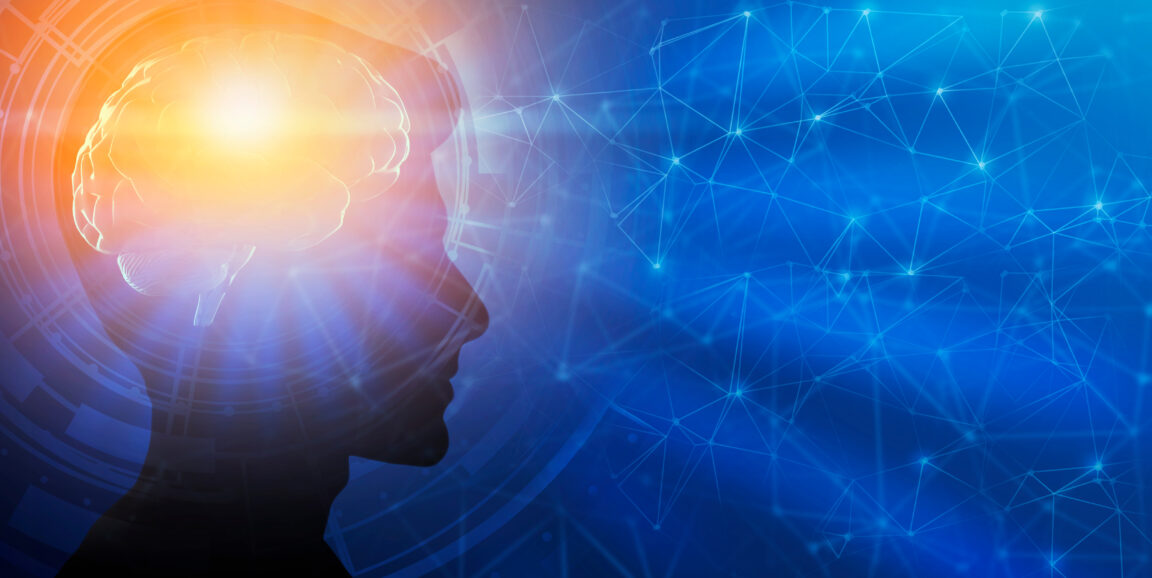Ever wonder where in your brain that interesting character called "I" lives? Stanford Medicine physician-scientist Josef Parvizi, MD, PhD, has news of its whereabouts.
If skulls were transparent, you still wouldn't see much going on in someone else's brain. But Parvizi has ways of peeking into people's heads and finding out what makes us tick. His experiments have pinpointed specific brain regions crucial to capabilities ranging from perceiving faces to recognizing numerals.
Parvizi's most recent sighting, described in a paper published June 8 in Neuron, unveils the surprising role of a small structure sandwiched between the brain's two hemispheres. The structure, called the anterior precuneus or aPCu, is the epicenter of a system of distributed brain regions that hum in synch -- their activity rising and falling in coordination with one another's, indicating teamwork. (Spoiler alert: Speaking of rising and falling, stay tuned for a description of people's altered perceptions of their place in the world when their aPCu gets fiddled with.)
Parvizi, postdoctoral scholar Dian Lu, PhD, and their colleagues discovered that this archipelago of collaborating brain regions spearheaded by the aPCu is crucial for integrating information about your location, motion, muscle and joint positions and sensations to form a mental map of your sense of bodily, or physical, self.
To explain the system's significance, Parvizi invoked that odd couple, "I" and "me."
"For every action we take, even during dreams," he said, "there's always an agent behind it: We call that agent 'I.' 'Me' is everything we have stored in our memories about the 'I'".
The two selves
Neuroanatomically, there's a separate archipelago of brain structures governing each. These two systems are continuously interacting with each other.
The physical/bodily sense of self -- "I" -- contrasts with another, narrative aspect of self -- "me" -- that has to do with actively or passively thinking about your past life or planning your future: things like memory, habits, personality, emotions, feelings for others, what lies ahead, etc.
The narrative self -- "me" -- dwells in a well-studied network called the default mode network. (To the non-specialist ear, the three words "default," "mode" and "network" read like a trio of random words singing off-key. But the term actually makes sense: It designates a brain network that's active when we're daydreaming, recalling past events and so forth.)
There's no official name yet for the bodily-self network, although it's known to exist. Previous studies have highlighted a set of structures composing it, but didn't say a lot about its now-apparent kingpin, the aPCu.
To further delineate the brain network captained by the aPCu, Parvizi's team obtained brain-imaging data from five of his patient-participants as well as from nearly 1,000 participants in the Human Connectome Project, launched in 2010 to map the human brain's neural connections.
"We've shown the precise location of key cells in the aPCu and, Dian's map clearly shows how they connect with the rest of the brain," Parvizi told me. The aPCu is located close to a brain structure that's considered a key node in the default mode network. But it's not part of that network, even though it communicates intensely with it.
"Electrically stimulating the default mode network doesn't do anything at all to one's sense of self or consciousness," Parvizi said.
"Your sense of physical or bodily self represents your organism in the immediate here and now, with a particular point of view that is yours alone, your first-person perspective on the world around you. Nobody shares it," Parvizi said. "You may not be conscious of your point of view. But you will be if I disrupt the network that generates it. Your place in the world around you will suddenly seem unreal."
Probing the brain
Parvizi makes his observations in his patients who are being evaluated for possible surgical treatment of recurring, drug-resistant epileptic seizures. Fine needles that serve as electrodes are inserted in the brain by a neurosurgeon under anesthesia. Patients stay hooked up to the monitoring apparatus for several days, while the electrodes pick up electrical activity within the brain and report back to a computer. The procedure eventually captures the inevitable repeated seizures, allowing neurologists to determine the exact spot in each patient's brain where the seizures are originating. A substantial number of patients gain freedom from recurring seizures as a result of this invasive approach.
With these patients' consent, Parvizi passes tiny pulses of current through a series of individual electrodes, stimulating or disrupting activity in tiny discrete patches of brain matter and watching what happens. (The procedure is safe and the brain feels no pain.)
One day a patient told him, "Every time I have a seizure, I have a sense of depersonalization and dissociation. Everything's unreal, not happening to me."
The patient's seizures turned out to originate from the aPCu. Wanting to learn more about what was going on, Parvizi and his colleagues found eight more patients with implanted electrodes passing through their aPCu. The patients agreed to let him disrupt this structure's activity with electrical pulses.
When he did that, Parvizi said, "All of them reported something weird happening to their sense of physical self. In fact, three of them reported a clear sense of depersonalization, similar to taking psychedelics."
But this sensation of detachment wasn't an out-of-body experience.
"In an out-of-body experience, you see yourself from the top," Parvizi said. "Our subjects did not report that at all. They still felt like they're inside their bodies. But they typically reported a change in their sense of their location and orientation. If the right side of the brain was stimulated, they felt as though they were floating; if the left side was stimulated, they felt as if they were falling. As they looked around, it didn't make sense. They shouldn't be floating or sinking, but it felt like they were. The world around them seemed unreal."
Oddly, patients' reports of flying or floating versus falling or plunging were accompanied by relatively positive versus negative emotions, respectively, depending on whether the right or the left aPCu had been electrically stimulated. (Like many brain structures, the aPCu turns up on both hemispheres of the brain.)
"Why that happens, I have no clue," Parvizi said. "I am absolutely puzzled why stimulating the left versus the right side elicits opposite effects, but we're going to figure that out."
Photo by Prostock-studio






